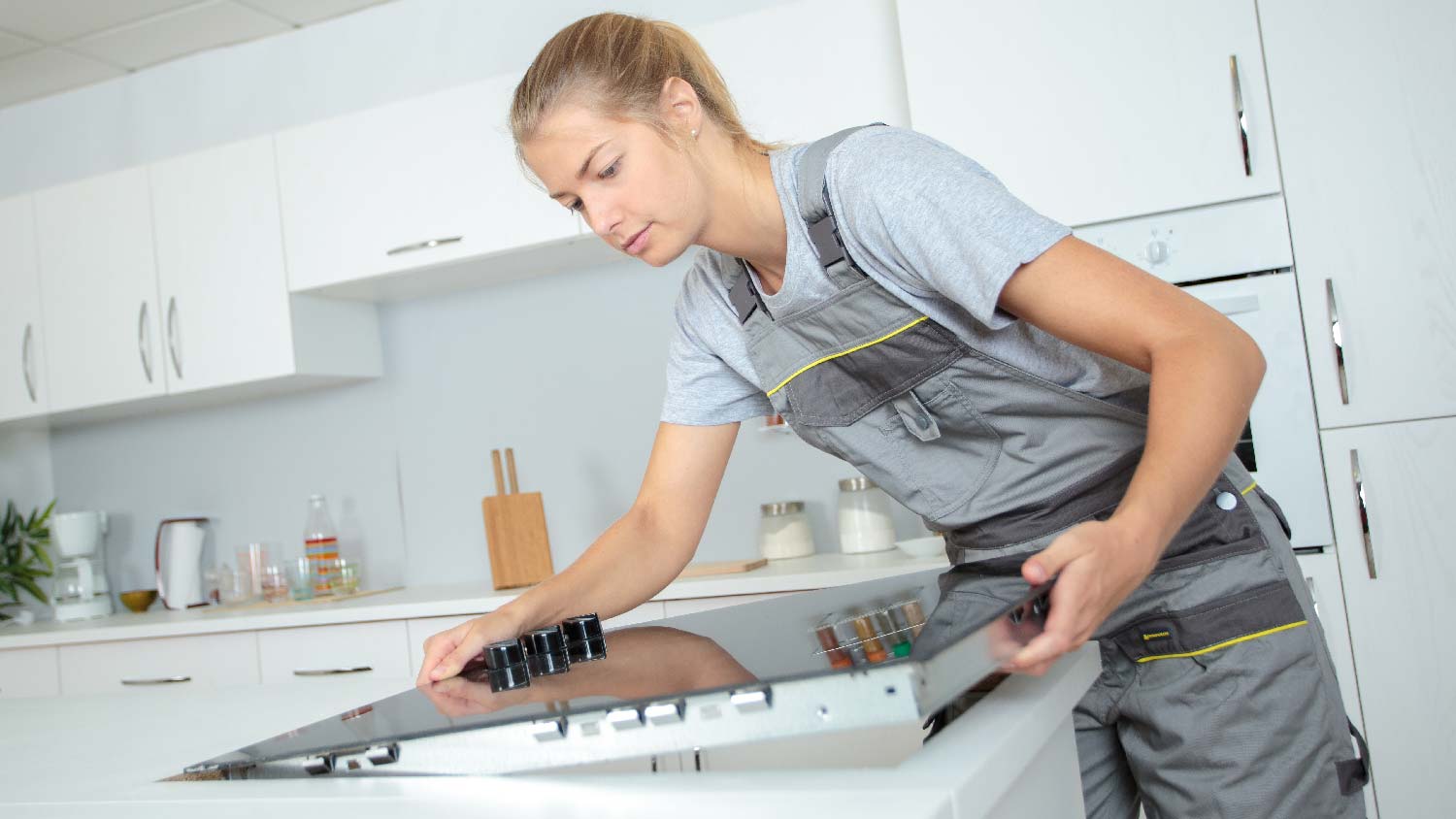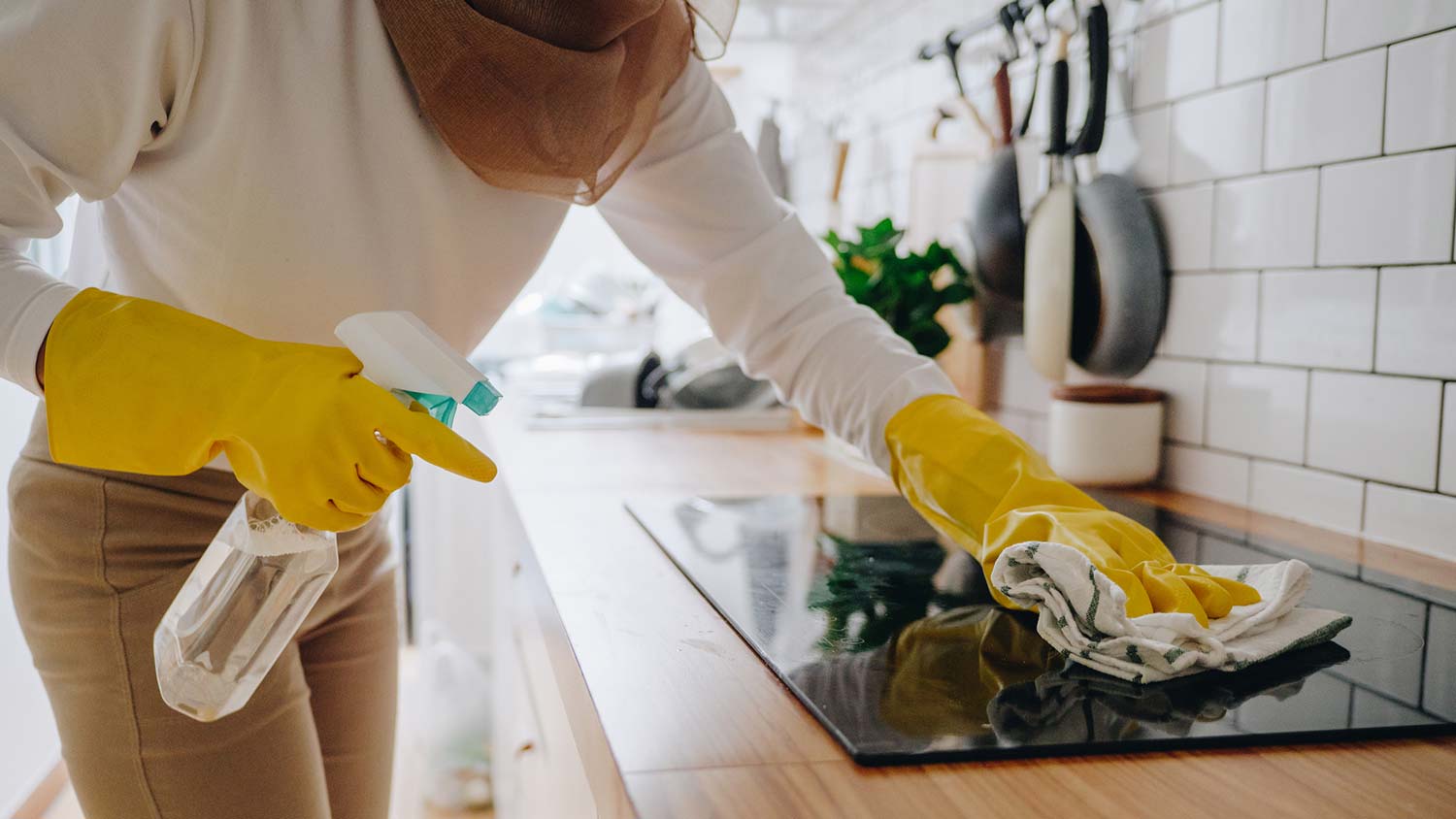
Discover the average ice maker repair cost, key price factors, and tips to save. Learn how to budget for your ice maker repair and when to repair or replace.
Replacing a glass stove top costs $400 on average or between $350 and $600 based on type, size, and number of components, among other factors.


Replacing a tempered glass stove top ranges between $200 and $600 on average.
A ceramic glass stove top runs between $400 and $1,000 to replace.
You can expect to pay between $50 and $200 per hour for labor when replacing a glass stove top.
Common add-ons, such as burner replacement or stove cleaning, range between $100 and $300.
Control know replacement costs an average of $20 to $50 per knob, depending on the stove top size and model.
Several factors affect the cost of replacing a glass stove top, including the type and size of the glass, additional features, labor, and the number of burners.
Glass stove tops are typically either tempered or ceramic. Tempered glass is more affordable, ranging from $200 to $600, but it’s not as durable as its ceramic counterpart. Tempered glass is treated with heat to make it more resistant to heat and impacts. When it breaks, it shatters into blunt pieces rather than sharp pieces, reducing the risk of injury.
Ceramic glass is made via a crystallization process that creates a material with both glass and ceramic properties. It’s more resistant to heat and thermal shock, aka extreme temperature changes, than tempered glass, but it also costs more, ranging from $400 to $1,000.
| Type of Glass | Description | Average Cost |
|---|---|---|
| Tempered | Not as heat resistant as ceramic but more affordable | $200-$600 |
| Ceramic | Highly resistant to heat and thermal shock | $400-$1,000 |
The number of burners on a stove can affect its costs in several ways. For starters, the more burners a stove has, the bigger the glass stop needs to be, and therefore, the higher the costs. Plus, more burners often mean the design and installation process is more complex than it is for stoves with fewer burners, which can increase your costs.
Size is one of the biggest factors affecting glass top replacement costs. The bigger the glass piece you need, the more you can expect to pay. Larger pieces of glass not only cost more to make, but they’re also more challenging to handle, transport, and install, which may increase your labor costs. In some cases, large glass tops need additional reinforcement, further increasing costs.

There are two types of glass stoves: induction and electric. Induction stove top replacements typically cost the most, ranging from $400 to $1,000. They’re more costly because this stove type needs specialized glass—usually ceramic—that can handle the high temperatures, thermal shock, and magnetic fields that induction cooking requires. Induction stoves also often have more advanced technology and features, which can drive up the replacement price.
Meanwhile, electric stoves are often made from tempered glass, which is more affordable than ceramic, because they don’t need the extra reinforcement that induction cooking requires. Electric stove top replacements cost between $200 and $600.
If your stove top is still under warranty, the manufacturer may cover part or all of your replacement costs. However, it depends on your specific coverage. Some warranties cover glass breaks, while others only cover workmanship or materials defects. Check your warranty to determine exactly what’s covered.
If a glass stove top has additional features, like touch controls, sensors, or specialized coatings, it can increase your costs. These features may require precise handling, alignment, and/or calibration, which can add more time and therefore labor costs to your replacement.
Hiring a local technician for an appliance repair costs between $50 and $200 per hour. The time it will take to install the replacement depends on the type and size of the glass, as well as the complexity of the replacement process. For instance, stove tops with multiple burners or advanced features typically take longer to replace than more basic stove tops, driving up costs. However, most replacements are finished within two hours.
When it comes to appliance installation, homeowners utilize pros for many different reasons. When looking at over 10,200 Angi customers, only 10% of all appliance installation requests are related to cooktops, specifically. Microwave or oven installations make up 17% of all appliance installation requests, which is tied with dishwasher installation. If you know you’ll be installing multiple appliances, speak to your appliance installation specialist to discuss handling all the jobs in a single visit and to see if they can offer a discount for bundling the work.
Hiring a local appliance repair pro costs more upfront, but you benefit from safer handling, correct installation, and a properly functioning cooktop. Pros bring the right tools, training, and experience to replace a glass stove top without damaging internal components or voiding the appliance warranty.
Replacing a glass cooktop involves electrical components, fragile materials, and manufacturer-specific parts. Here are some of the top reasons to work with a pro:
Professionals know how to safely disconnect power, remove the damaged top, and install the replacement without cracking the glass or harming internal wiring.
They ensure the new glass top is compatible with your stove’s model, which prevents performance issues and warranty conflicts.
Hiring a pro reduces the risk of damaging burners, control boards, or connectors—repairs that can be far more expensive than the replacement itself.
Many technicians can bundle services such as inspecting heating elements, checking electrical connections, or performing general maintenance during the same visit.
If you want to take on some tasks yourself, these DIY steps can help reduce time and labor costs:
Disconnect the stove from power by unplugging it or switching off the circuit breaker before the technician arrives.
Clear the surrounding countertop and remove items stored in nearby drawers or cabinets to give the technician easy access.
Locate and provide the stove’s model number in advance so the correct replacement glass top can be ordered without delays.

When replacing your glass stove top, you may want to make other repairs or replacements as well, such as replacing your burners or control knobs. You might also consider purchasing an extended warranty, which can increase your costs but potentially save you money in the long run.
Burner replacement cost: $100–$250 per burner
Stove cleaning cost: $100–$300
Extended warranty cost: $100–$250
Control knob replacement cost: $20–$50 per knob
Glass stove top replacements can get pricey, but there are a few ways that you can potentially save money on this project, including:
Getting quotes from multiple professionals to find the best price
Bundling your replacement with other repair services you may need
Checking your warranty to see if it covers any replacement costs
Purchasing the glass stop yourself to avoid service markups
Replacing the glass top yourself if you have the required skills, knowledge, and tools
Tell your pro the exact make and model of your stove so they can confirm part compatibility before the appointment.
Ask whether the replacement glass comes in different finishes or thicknesses and if any upgrades are available.
Discuss any prep you need to do—such as disconnecting power, clearing nearby counters, or removing knobs.
Confirm whether there may be added costs for issues like hidden wiring damage or hard-to-remove adhesive.
If you’re considering additional fixes (like replacing burners or updating control knobs), ask whether it’s cost-effective to bundle them with the glass top replacement.
Home is the most important place on earth, which is why Angi has helped more than 150 million homeowners transform their houses into homes they adore. To help homeowners with their next project, Angi provides readers with the most accurate cost data and upholds strict editorial standards. We extensively research project costs to develop the pricing data you see, so you can make the best decisions for you and your home. We rely on reputable sources, including the U.S. Bureau of Labor Statistics, academic journals, market studies, and interviews with industry experts—all to ensure our prices reflect real-world projects.
Want to help us improve our cost data? Send us a recent project quote to [email protected]. Quotes and personal information will not be shared publicly.
From average costs to expert advice, get all the answers you need to get your job done.

Discover the average ice maker repair cost, key price factors, and tips to save. Learn how to budget for your ice maker repair and when to repair or replace.

A wood stove can add warmth and ambiance to your home, but is it in your budget? Discover average wood-burning stove installation costs in this guide.

Get expert insights on dishwasher repair cost, including average prices, key cost factors, and tips to save money on repairs.

Using your stove can cause smoke, smells, and grease to build up in your kitchen and home. Find out how much CFM your range hood needs to kick them to the curb.

After buying a new vented dryer, you may be wondering how to install it. Follow our step-by-step guide on how to install a dryer vent.

Refrigerators comprise many different parts. Understanding what they are and how they function will help you maintain it and troubleshoot problems.